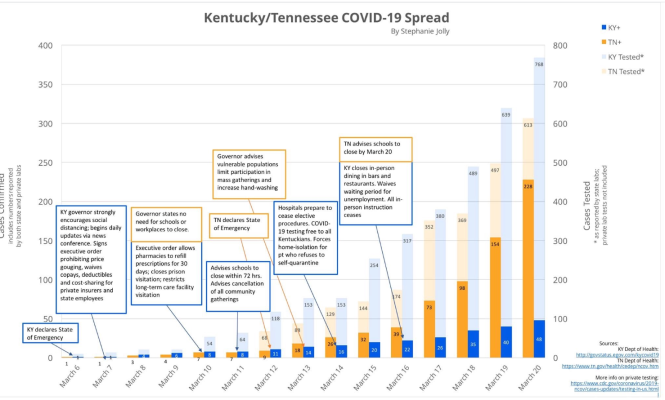I live in Iowa. We are well behind NY or WA. Some factoids
Population ................3,156,000
Hospital beds ................. 6,300
Confirmed Cases ............... 179
Negative Tests ................ 2,975
New cases today ................. 34
Number in hospitals today .... 31
Number discharged ............. 16
Number of deaths ................. 1
Governor recommended that all schools close as of March 16 (many were already on spring break).
Governor ordered no groups of more than 10, also closed restaurants, bars, gyms, theaters, casinos, senior centers as of March 17 (I was at the gym and they kicked us out at noon).
The actions above occurred when we had 27 confirmed cases. We are now 9 and 10 days into the closed period.
I'm interested in how this plays out. New York closed restaurants one day sooner than Iowa. I think it had 700 cases at the time, and now has 37,000.
Iowa's case load is growing much more slowly. I wonder if we actually got out ahead of it, or just had better luck.
The issue is what happens if cases continue to grow very slowly in Iowa?


